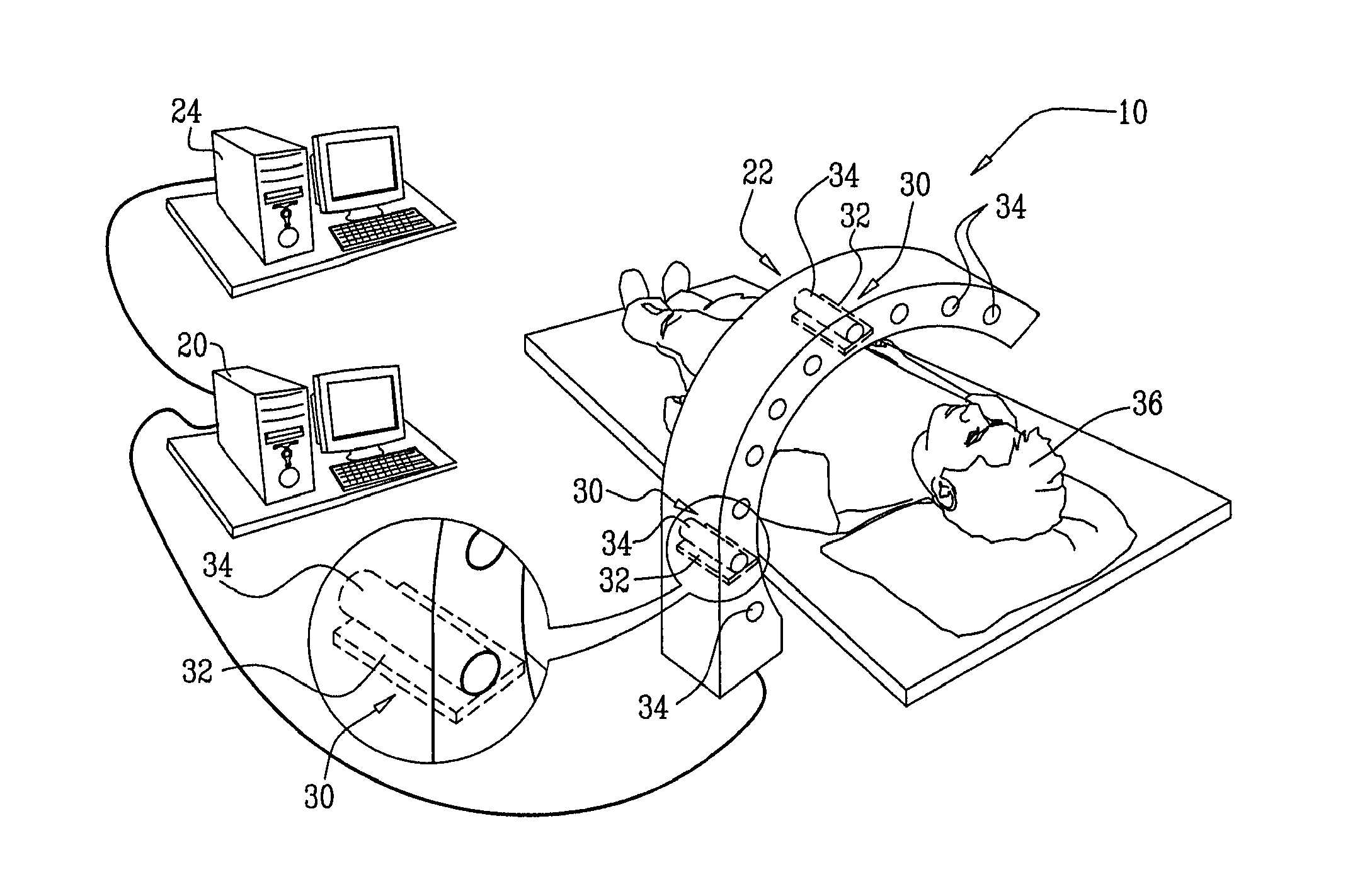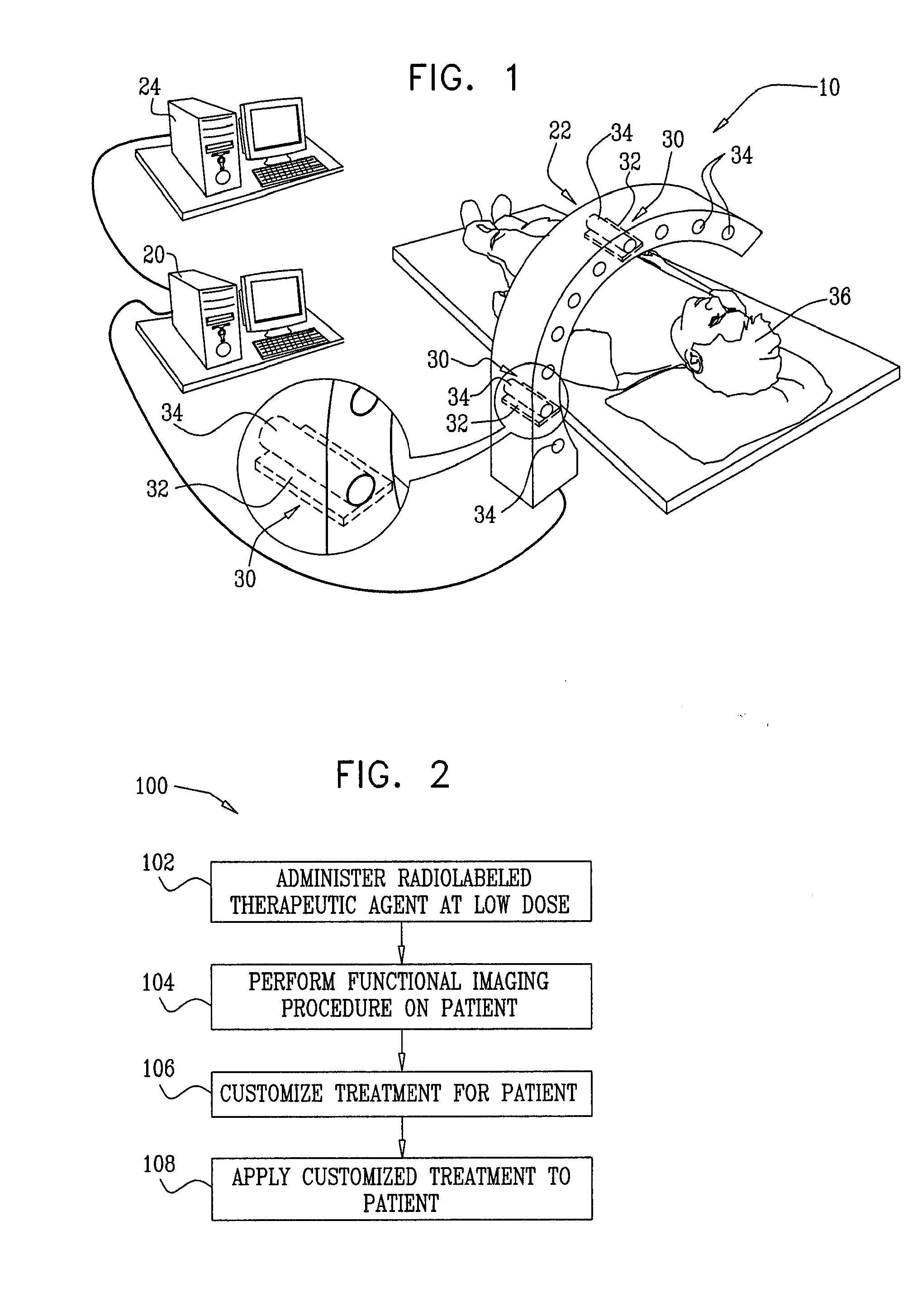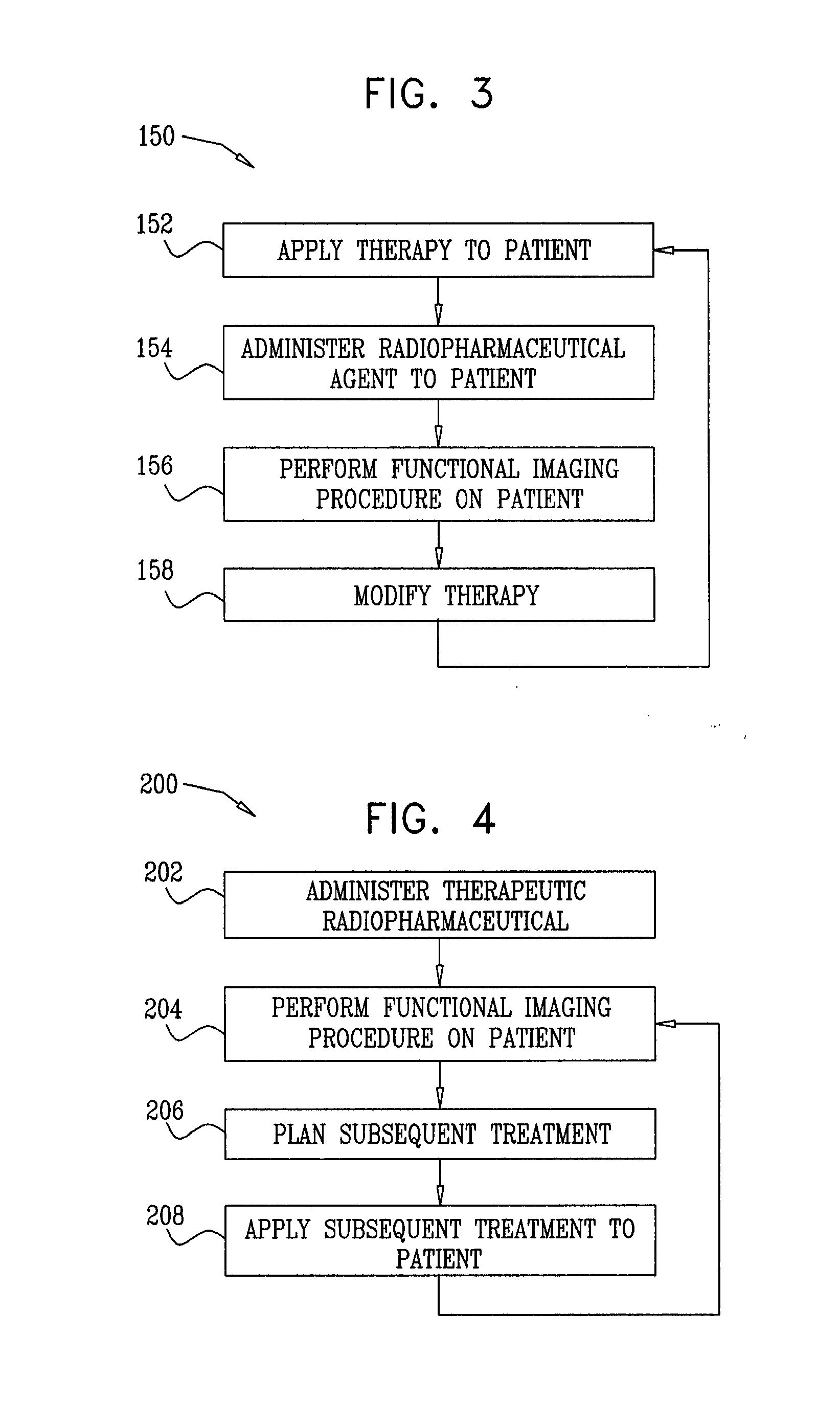Radiopharmaceuticals For Diagnosis And Therapy
- Summary
- Abstract
- Description
- Claims
- Application Information
AI Technical Summary
Benefits of technology
Problems solved by technology
Method used
Image
Examples
Embodiment Construction
[0179]FIG. 1 is a schematic illustration of an imaging system 10, in accordance with an embodiment of the present invention. Imaging system 10 comprises a control unit 20, a camera 22, and imaging workstation 24. Typically, control unit 20 and imaging workstation 24 comprise one or more standard personal computers or servers with appropriate memory, communication interfaces and software for carrying out the functions prescribed by relevant embodiments of the present invention. This software may be downloaded to the control unit and imaging workstation in electronic form over a network, for example, or it may alternatively be supplied on tangible media, such as CD-ROM.
[0180] Control unit 20 typically comprises: (a) image acquisition functionality, which is configured to drive camera 22 to perform image acquisition of the patient; (b) image reconstruction functionality, which is configured to perform an image reconstruction procedure on the acquired image; (c) image analysis function...
PUM
| Property | Measurement | Unit |
|---|---|---|
| Fraction | aaaaa | aaaaa |
| Fraction | aaaaa | aaaaa |
| Fraction | aaaaa | aaaaa |
Abstract
Description
Claims
Application Information
 Login to View More
Login to View More - R&D
- Intellectual Property
- Life Sciences
- Materials
- Tech Scout
- Unparalleled Data Quality
- Higher Quality Content
- 60% Fewer Hallucinations
Browse by: Latest US Patents, China's latest patents, Technical Efficacy Thesaurus, Application Domain, Technology Topic, Popular Technical Reports.
© 2025 PatSnap. All rights reserved.Legal|Privacy policy|Modern Slavery Act Transparency Statement|Sitemap|About US| Contact US: help@patsnap.com



